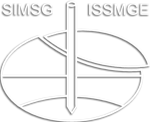A new ternary composition classification method for municipal solid waste and its application
A new ternary composition classification method for municipal solid waste and its application
Landfill is the most common waste management method to deal with increasing generation of municipal solid waste (MSW). Around 70% of MSW has been disposed of in landfills, resulting in tens of thousands of closed and operating landfills worldwide. To ensure stability and integrity of a landfill, it is necessary to have a knowledge of the physical and engineering properties of MSW. The properties of MSW may vary widely due to different compositions. Given the significant variation in MSW constituents, a rigorous classification system can facilitate the interpretation and comparison of experimental and testing results among literature, which contributes to the knowledge of the properties of MSW. Therefore, in this study, 14 typical types of MSW constituents were classified using the Hierarchical Cluster Analysis (HCA) based on eight intrinsic properties of materials, including shear modulus(G), elastic modulus (E), Poisson's ratio (), specific gravity (Gs), thermal conductivity (k), degradable organic content (DOC), methane yield (L0), and natural water content (wc). The results showed that the constituents of MSW can be divided into three fractions, namely, biodegradable (B), reinforcing (R), and inert (I) fractions, which is a new ternary MSW composition classification method. The ternary classification method was applied to reanalyze dry unit weight (d) of 150 low-, medium-, and high-compacted MSW specimens from 54 available studies. The MSW types summarized cover waste with B = 1 - 100%, I = 0 - 86.4%, and R = 0 - 59.2%. The d of MSW could be well described by its ternary composition and compaction efforts.
X. Pi; Xunchang Fei; Y. Guo; X. Sun
9th International Congress on Environmental Geotechnics (ICEG2023)
Landfilling
Geoenvironmental Engineering, Landfill Engineering
https://doi.org/10.53243/ICEG2023-239
